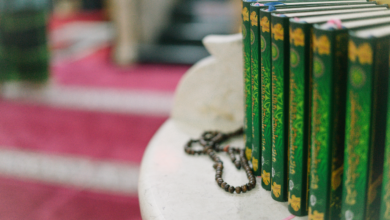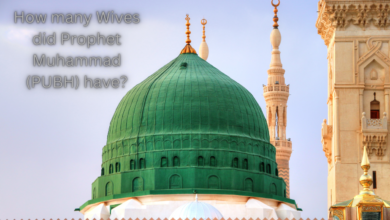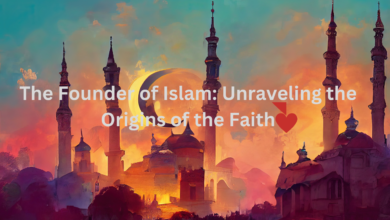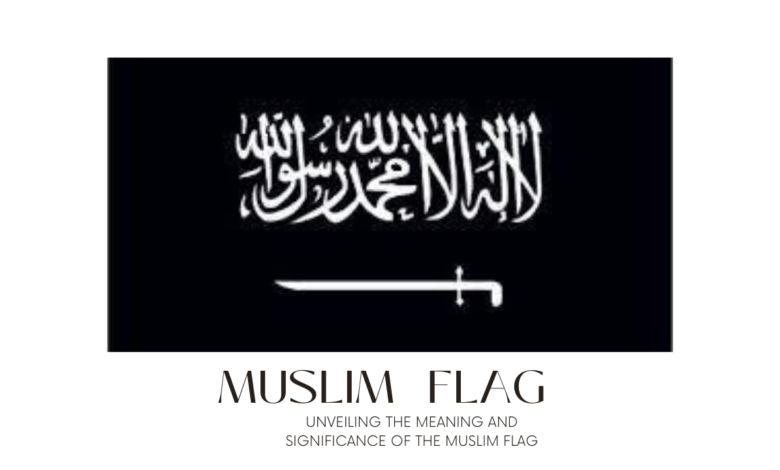
Muslim Flag
The Muslim Flag, often referred to as the Islamic Flag or Shahada Flag, symbolizes the central creed of Islam, the Shahada, which states: “There is no god but Allah, and Muhammad is the Messenger of Allah.” It represents monotheism and faith in Allah.
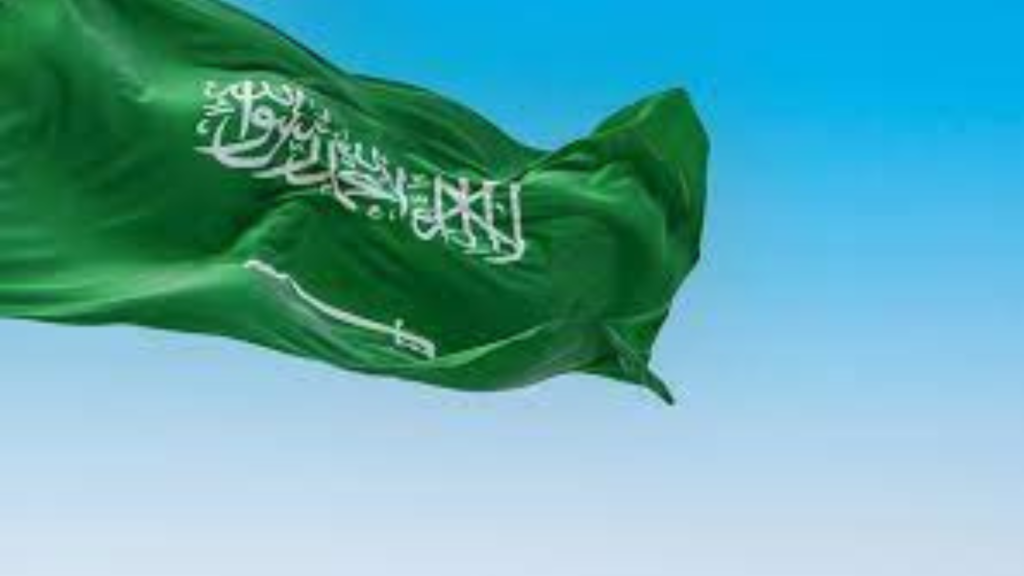
Introduction to the Muslim Flag
The Muslim Flag, also known as the Islamic Flag or Shahada Flag, is a symbol representing Islam and its followers. It is a simple yet profound flag with unique features that distinguish it from other banners. Let’s delve deeper into what makes this flag special.
The Significance of Flags in Islamic History
Flags have played a vital role in Islamic history, serving as symbols of unity and faith. They have been used in battles, processions, and important events. The concept of flags in Islam dates back to the time of the Prophet Muhammad, and it continues to hold significance in the Muslim world.
The Origin of the Muslim Flag
The origins of the Muslim Flag can be traced to the Shahada, the Islamic declaration of faith. The flag typically features the Shahada, which translates to “There is no god but Allah, and Muhammad is the Messenger of Allah.” This statement is central to Islamic belief and serves as a powerful symbol of monotheism.
Design and Symbols on the Muslim Flag
The Muslim Flag is usually plain black or white, with the Shahada written in bold, elegant calligraphy. The simplicity of the design emphasizes the fundamental nature of Islamic belief. Some variations may include additional elements, but the core design remains focused on the Shahada.
Colors and Their Meanings
The choice of colors in the Muslim Flag carries meaning. Black and white are traditionally used to symbolize purity and the absence of impurity. These colors reflect the simplicity and sincerity of Islamic belief.
Variations in Muslim Flags
While the basic design remains consistent, there are variations in Muslim flags used by different communities and regions. Some may incorporate additional Islamic symbols or different colors to represent local identities and traditions.
The Use of Flags in Islamic Celebrations
Muslim flags are often prominently displayed during special Islamic occasions, such as Eid al-Fitr and Eid al-Adha. They symbolize the joy and unity of the Muslim community during these festive times.
The Role of Flags in Muslim Countries
Many Muslim-majority countries have their national flags, which often incorporate the Shahada or other Islamic symbols. These flags serve as a source of national pride and unity.
Common Misconceptions About the Muslim Flag
There are several misconceptions about the Muslim Flag, including associations with extremism. It is essential to clarify these misunderstandings and promote a more accurate understanding of the flag’s significance.
Also Check
- Islam Bible
- Islam Facts
- Who Brought Islam To India?
- Islam History
- How Many Nabi in Islam?
- The Prophet Muhammad’s Legacy in Islamic Festivals
Displaying the Muslim Flag with Respect
When displaying the Muslim Flag, it is crucial to do so with respect and reverence. Understanding the proper etiquette in handling and displaying the flag is essential for Muslims and non-Muslims alike.
The Muslim Flag in Modern Times
In the digital age, the Muslim Flag has become a symbol of pride for Muslims around the world. It is often displayed in various online platforms to express one’s faith and identity.
Global Awareness and Recognition
The Muslim Flag is gaining recognition and acceptance worldwide. It is not only a symbol of faith but also a means of promoting understanding and tolerance among different communities.
Flags of Other Religions
While the Muslim Flag is unique in its design and symbolism, it is interesting to note that other religions also have their respective flags. Comparing and contrasting these flags can offer valuable insights into the diversity of religious symbolism.
Conclusion
In conclusion, the Muslim Flag is a symbol of great importance in the Islamic world. Its simplicity, rich history, and deep symbolism make it a powerful representation of faith and unity. Understanding the significance of the Muslim Flag is a step towards fostering intercultural respect and harmony.
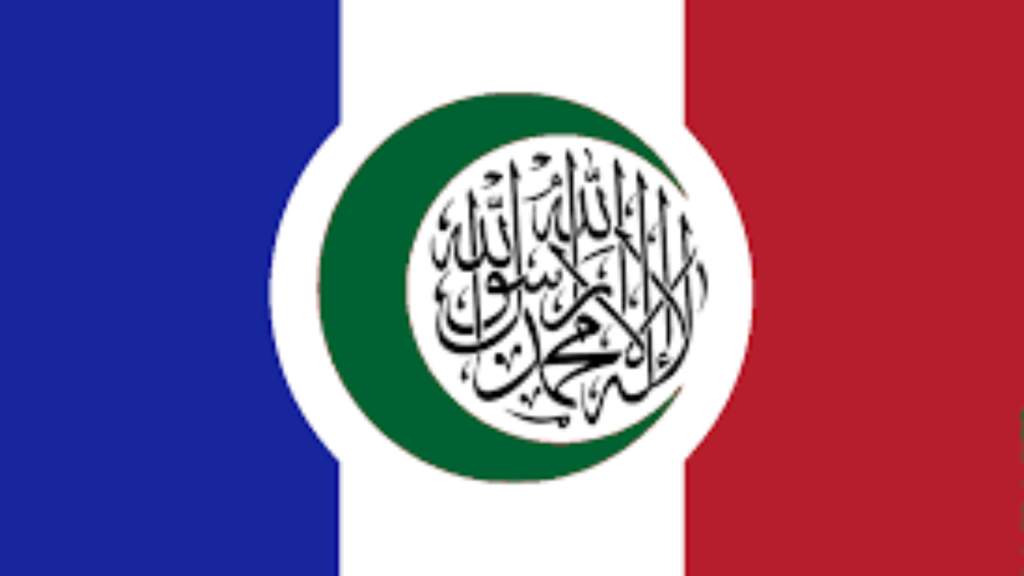
(FAQs) about the Muslim Flag:
What is the significance of the Muslim Flag?
The Muslim Flag, often referred to as the Islamic Flag or Shahada Flag, symbolizes the central creed of Islam, the Shahada, which states: “There is no god but Allah, and Muhammad is the Messenger of Allah.” It represents monotheism and faith in Allah.
What are the colors typically used in the Muslim Flag?
The most common colors for the Muslim Flag are black and white. Black represents purity and the absence of impurity, while white symbolizes cleanliness and sincerity.
Is there a standard design for the Muslim Flag?
The standard design of the Muslim Flag includes the Shahada written in bold, elegant calligraphy on a black or white background. While this design is most prevalent, variations with additional elements exist.
Can anyone use the Muslim Flag, or is it restricted to Muslims only?
The Muslim Flag is not restricted to Muslims only. It can be used as a symbol of unity, respect, or understanding by individuals from diverse backgrounds. However, it should always be displayed with respect and reverence.
Do all Muslim-majority countries use the same flag?
No, Muslim-majority countries have their own national flags, which may incorporate the Shahada or other Islamic symbols. Each country’s flag is unique and represents its national identity.
Are there any specific guidelines for displaying the Muslim Flag?
Yes, there are guidelines for displaying the Muslim Flag with respect. It should not be defaced or placed on the ground. When displaying it in a physical form, it should be handled with care and placed in a clean and honorable location.
What is the historical significance of flags in Islamic culture?
Flags have been used in Islamic history as symbols of faith and unity. They were present in important events, battles, and processions, signifying the identity of the Muslim community.
Are there variations of the Muslim Flag for different occasions or celebrations?
While the standard design remains consistent, some communities or regions may use variations of the Muslim Flag during special Islamic occasions, such as Eid al-Fitr and Eid al-Adha.
Are there any misconceptions associated with the Muslim Flag?
Yes, there are misconceptions that link the Muslim Flag to extremism. It’s important to clarify that the flag primarily represents faith and should not be associated with extremist ideologies.
How can the Muslim Flag promote intercultural understanding and tolerance?
The Muslim Flag, when displayed with respect and explained in its proper context, can be a tool for promoting intercultural understanding and tolerance. It can facilitate conversations and bridge gaps between different communities by fostering mutual respect and dialogue.

